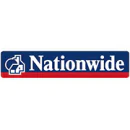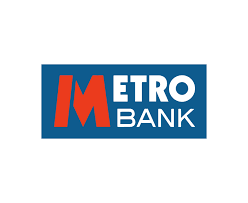Buy to let Mortgages
Expand Your Rental Property Portfolio with a Buy-to-Let Mortgage.
Understand what it takes to find the right Buy-to-Let deal
We work with more than 120 mortgage lenders, including
What is a Buy to let mortgage?
A buy-to-let mortgage is the ideal financial solution if you’re looking to purchase a property to rent out.
Unlike residential mortgages, buy-to-let mortgages are specially designed for property investors like you.
Whether you’re starting your investment journey or expanding your portfolio, these mortgages offer the necessary funds to get you started.


Benefits of Investing in Buy to Let Properties
Investing in buy-to-let properties allows you to generate a consistent rental income, which can be a more attractive option compared to traditional savings accounts with low interest rates.
Buy-to-let properties offer the potential for a steady income stream, but it’s important to note that interest rates on these mortgages can fluctuate.
Understanding the benefits and key considerations of buy-to-let mortgages will help you make an informed decision for your investment.
You can choose between a repayment or interest-only mortgage. With a repayment mortgage, you pay both the loan principal and interest each month, gradually paying off the loan. An interest-only mortgage only requires you to pay the interest each month, with the full loan amount due at the end of the term
Tailored Buy to Let Mortgage Deals
With our expertise and over a decade of experience, the Mortgagetek team will help you find flexible mortgage deals to suit your needs.
Remember, your rental income should cover the mortgage interest, as well as any associated fees and costs.
We will help you to consider additional expenses such as tax, home insurance, and maintenance costs to keep your property in good condition whilst ensuring you are achieving maximum value on your journey as property investor.

Steps to getting a Buy to let
There are four main steps that you need to go through on your journey to securing a Buy to let mortgage.
Establishing Eligibility
Review the market to find yourself the best rate
Apply for agreement in principle
Submit application to chosen lender
The criteria for a Buy to let
Buy to let mortgage deals come in various types to match your financial goals.
Fixed-rate mortgages provide stability, helping you budget effectively, while variable or tracker rates may offer lower initial costs but are subject to change.
When applying for a buy-to-let mortgage, lenders may have specific criteria:
Age Restrictions
Some lenders may have age limits or age range requirements for buy-to-let applicants.
Minimum Income Requirements
Lenders usually require a minimum income, typically around £25,000 per year.
Limits on the Number of Mortgages
There may be a cap on how many buy-to-let mortgages you can hold with a single lender.
Maximum Lending Limits
Each lender will set a maximum amount they are willing to lend, based on the property value and your financial profile.
Affordability Checks:
Lenders will assess your ability to afford monthly payments based on your income, debts, and rental income.
Key Differences Between Buy-to-Let and Residential Mortgages
While buy-to-let mortgages share similarities with residential mortgages, there are several key differences. One of the main distinctions is that buy-to-let mortgages typically require higher deposit amounts and come with higher interest rates.
What sort of deposit is needed?
Deposits for buy-to-let properties usually range from 25% to 40% of the property value, which ensures a solid investment for lenders.
Additionally, if you already own a property and are planning to purchase a buy-to-let property, be aware of the additional 3% Stamp Duty Land Tax (SDLT) charge. This extra cost applies to second properties, including buy-to-let investments.
Key Taxes, Costs, and Legal Requirements for Landlords
- Stamp Duty Land Tax (SDLT): If you buy additional residential properties, including buy-to-let investments, you’ll need to pay a higher stamp duty rate.
- Income Tax on Rental Income :Rental income above your personal allowance is taxed. However, the first £1,000 of rental income is tax-free thanks to the property allowance. Tax bill can be reduced by offsetting expenses like council tax, insurance, and letting agent fees. Also, you’ll receive a 20% tax credit on your mortgage interest payments.
- Capital Gains Tax: In the event a buy-to-let property is sold, you may be required to pay Capital Gains Tax on profits over the £3,000 annual tax-free allowance.
- Maintenance Costs: Maintain your buy to let property by budgeting for regular maintenance, repairs, and any necessary refurbishments.
- Landlord Insurance: Protect yourself as a landlord from potential risks, this will cover things like buildings insurance, unoccupied property cover, and rental protection insurance.
- Letting Agency Fees: Management fees to any third party involved in managing the property
- Safety Inspections: Paying for annual safety checks on gas appliances to ensure they’re safe for tenants. There may be other safety standards that are legally required
Different types of Buy to lets explained:
HMO (House of Multiple Occupancy)
An HMO is a property rented out to three or more tenants who are not part of the same household. HMOs are ideal for landlords seeking to maximize rental income by letting out rooms to individual tenants. However, they come with specific licensing and regulatory requirements, which vary depending on the local authority. Understanding these regulations is crucial when investing in an HMO property.
MUFB (Multi-Unit Freehold Block)
A Multi-Unit Freehold Block (MUFB) is a single property that consists of multiple self-contained units, such as flats or apartments, all of which are owned under a single freehold. This type of property allows investors to purchase several units within one building, making it a popular choice for those looking to expand their buy-to-let portfolios with minimal legal complexity.
SPV (Special Purpose Vehicle)
An SPV is a limited company set up specifically for the purpose of owning and managing buy-to-let (BTL) properties. Investors often use SPVs to reduce personal tax liabilities, as rental income generated by the company is taxed differently than income from personally owned properties. This structure can offer potential tax advantages and provide a clear distinction between personal and business finances.
Consumer Buy-to-Let (Let-to-Buy)
A Consumer Buy-to-Let (Let-to-Buy) mortgage allows homeowners to convert their current property into a rental property while purchasing a new home to live in. This solution is useful for those who want to move to a new property but still wish to retain ownership of their existing one, turning it into a source of rental income.
Holiday Lets
Holiday lets are short-term rental properties that are typically rented out for holiday or vacation stays. These properties can be a great investment for landlords looking to generate higher rental income compared to traditional long-term lets. Holiday let owners are also subject to specific tax regulations and must ensure their properties meet certain health and safety standards for short-term renters.
Serviced Accommodation
Serviced accommodation refers to fully furnished properties that are available for short-term rent and include hotel-style services, such as cleaning, utilities, and sometimes concierge services. This type of accommodation is ideal for guests looking for a home-like experience with added convenience, making it a popular choice for business travellers, tourists, or those in need of temporary housing.
Why Choose Mortgage-Tek Mortgage Services
Get your right and on-point advice by our OMA-approved brokers. Working with Mortgage-Tek is simple and straightforward, here are the benefits we offer to our worthy clients.
FCA-Authorised & CeMap Qualified
Fully certified to deliver expert advice tailored to your needs.
Experienced in Niche Situations
Dedicated to Fairness
Expert advice
Time saving
Customised solutions
Frequently Asked Question
Can I live in a property with a buy-to-let mortgage?
No, you’re not allowed to live in a property that has a buy-to-let mortgage. Doing so would breach the mortgage terms. If you plan to live in the property, you’ll need a residential mortgage instead.
Can first-time buyers get a buy-to-let mortgage?
It’s possible but more difficult.
Many lenders prefer applicants who already own a property.
If you’re a first-time buyer, expect stricter criteria and fewer available deals.
Are buy-to-let mortgages available for limited companies?
Yes, many landlords now choose to take out buy-to-let mortgages through a limited company for potential tax advantages.
However, not all lenders offer this, and the process can be more complex.
What are the tax implications of a buy-to-let property?
Landlords must pay income tax on rental income and may also face capital gains tax when selling the property.
Mortgage interest tax relief has also been phased out for individual landlords, though companies are treated differently.
Can I get a buy-to-let mortgage if I’m self-employed?
Yes, self-employed applicants can get buy-to-let mortgages, but lenders will want to see at least one to two years of accounts or tax returns to verify income stability.
Can I switch my residential mortgage to a buy-to-let mortgage?
Yes, but you’ll need to apply for a “consent to let” from your lender or switch to a formal buy-to-let mortgage. Terms and availability vary by lender.
Do I need a managing agent for my buy-to-let property?
It’s not required, but many landlords use letting agents to handle tenant management, rent collection, and maintenance—especially if they don’t live near the property or have multiple investments.




















